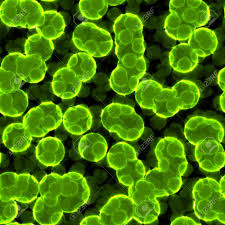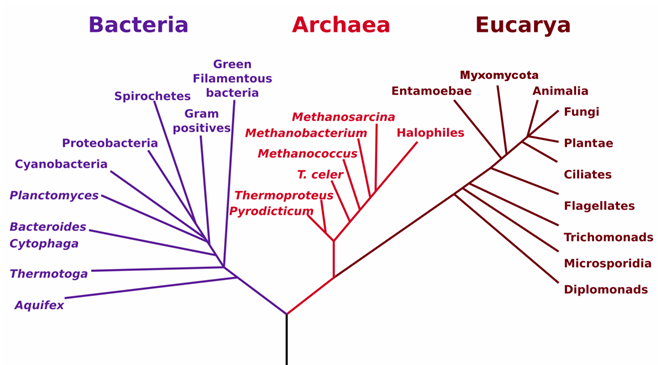Taxonomy can be defined as the scientific system of classifying biological organisms into taxa (singular: taxon). Taxonomy is generally the science of biological classification; and it is the grouping of living organisms inclusive of microorganisms according to some characteristics which they share. It is the system of classifying organisms in orderly manner into categories known as taxon. Taxa are other terms used for groups in scientific classification. A taxon is a group of strains, species or genera that have similar morphologic or physiological characteristics different from other category of organisms in a given taxonomic classification.
Taxonomy is all about putting a name to an organism. It is the science of identifying and naming species of organisms and arranging same into a classification system. Because of the diversity of organisms on planet earth, living organisms including microorganisms are therefore grouped together, and are further arranged into a hierarchical arrangement based on some mutual similarity or evolutionary similarities that exist amongst organisms. This type of identification and classification of living organisms makes a good sense of them.
Taxonomy is very significant to the microbiologists because it makes their work a little bit easier in terms of identifying, naming and grouping isolated organisms. It helps for accurate identification of microorganisms; better understanding of microbes because of their allotment to a given group, and it enhances better communication amongst scientists working with these organisms. It is noteworthy that in microbiology, especially in the clinical aspect of it, working with an unidentified microorganism could not just be only difficult for the physician to treat a given infection but also, the wellness of the patient will be in jeopardy. Thus, taxonomy helps to make straightforward the classification of the ever-increasing diversity of the microbial world.
In microbial taxonomy, inferences are usually drawn from the latest and updated edition of the “Bergey’s Manual of Systematic Bacteriology” (which was originally designed by Professor David Bergey and colleagues in 1923) when classifying, identifying or naming a bacterium. Information from this manual gives microbiologists a clue and an internationally accepted system of classifying prokaryotes, and it provides a precise method of classifying bacteria. However, the information in the Bergey’s Manual of Systematic Bacteriology is only provisional and is subject to change due to emerging information about the phylogenetic relationships of microorganisms. The identification and classification of microorganisms is a continuum, and readers are advised to always ensure that they refer to the Bergey’s Manual of Systematic and Determinative Bacteriology for updated information regarding the phylogenetic relationships of microorganisms. The standard ranking used in the taxonomy of bacteria is listed in Table 1. Only the rank of family, genus and species are normally used when categorizing a bacterium for practical purposes and for easy comprehension.
Table 1. Taxonomic organizations of bacteria (e.g. Klebsiella pneumoniae)
| Standard ranking | Example |
| Kingdom | Prokaryote (Bacteria) |
| Division | Proteobacteria |
| Class | γ-Proteobacteria |
| Order | Enterobacteriales |
| Family | Enterobacteriaceae |
| Genus | Klebsiella |
| Species | Klebsiella pneumoniae |
References
Ciccarelli FD, Doerks T, von Mering C, Creevey CJ, Snel B, Bork P (2006). Toward automatic reconstruction of a highly resolved tree of life. Science, 311(5765):1283–1287.
Euzéby, J. P. (2010). List of Bacterial Names with Standing in Nomenclature. Int. J. Syst. Bacteriol., 47, 8 July, 2016. Retrieved from http://www.bacterio.cict.fr/m/micrococcus.html
Fauquet C.M, Mayo M.A, Maniloff J, Desselberger U and Ball L.A. (Eds) (2005). Virus Taxonomy. Eight Report of the International Committee on Taxonomy of Viruses. Burlington, M.A. Elsevier Academic Press.
George M. Garrity (2005). Bergey’s manual of systematic bacteriology. 2. Auflage. Springer, New York, 2005, Volume 2: The Proteobacteria, Part B: The Gammaproteobacteria.
Grenfell B.T, Pybus O.G, Gog J.R, Wood J.L, Daly J.M, Mumford J.A and Holmes E.C (2004). Unifying the Epidemiological and Evolutionary Dynamics of Pathogens. Science, 303(5656): 327–332.
Gupta RS (2000). The natural evolutionary relationships among prokaryotes”. Crit. Rev. Microbiol, 26 (2):111–131.
Janda, J. M., and Abbott, S. L. (2006). The Genera Klebsiella and Raoultella. The Enterobacteria (2nd ed., pp. 115-129). Washington, USA: ASM Press.
Madigan M.T., Martinko J.M., Dunlap P.V and Clark D.P (2009). Brock Biology of microorganisms. 12th edition. Pearson Benjamin Cummings Publishers. USA. Pp.795-796.
Moreira D and López-García P (2009). Ten reasons to exclude viruses from the tree of life Nature Reviews Microbiology, 7(4):306-311.
Murray P.R, Baron E.J, Jorgensen J.H., Pfaller M.A and Yolken R.H (2003). Manual of Clinical Microbiology. 8th edition. Volume 1. American Society of Microbiology (ASM) Press, Washington, D.C, U.S.A.
Purves W.K, Sadava D, Orians G.H, and Heller H.C (2007). Life: The Science of Biology, 7e by Sinauer Associates, W.H. Freeman and Company, Sunderland.
Salyers A.A and Whitt D.D (2001). Microbiology: diversity, disease, and the environment. Fitzgerald Science Press Inc. Maryland, USA.
Woese C.R, Kandler O, Wheelis M.L (1990). Towards a natural system of organisms: proposal for the domains Archaea, Bacteria, and Eucarya. Proceedings of the National Academy of Science, 87(12):4576–4579.
Discover more from Microbiology Class
Subscribe to get the latest posts sent to your email.





